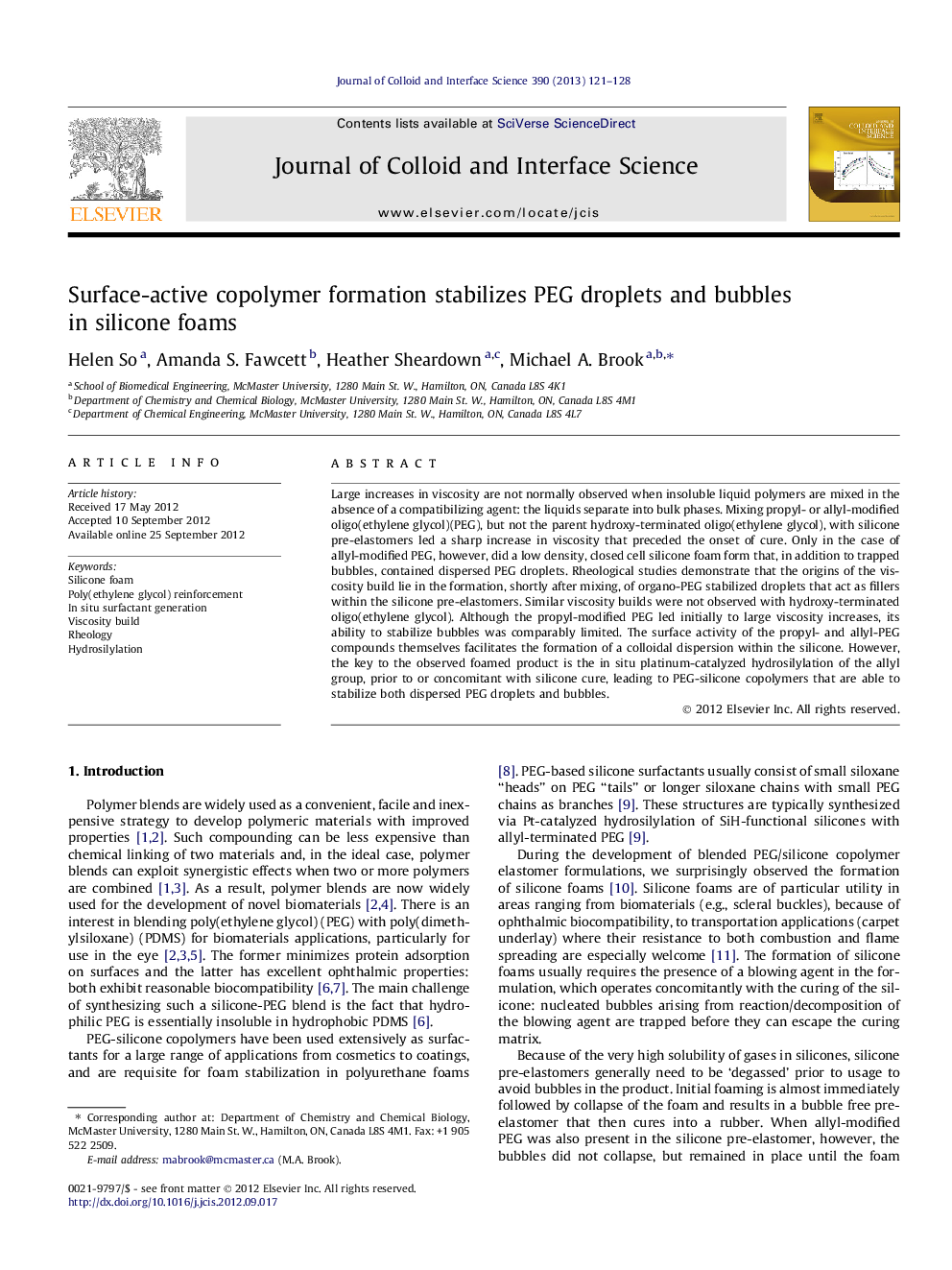| Article ID | Journal | Published Year | Pages | File Type |
|---|---|---|---|---|
| 607837 | Journal of Colloid and Interface Science | 2013 | 8 Pages |
Large increases in viscosity are not normally observed when insoluble liquid polymers are mixed in the absence of a compatibilizing agent: the liquids separate into bulk phases. Mixing propyl- or allyl-modified oligo(ethylene glycol)(PEG), but not the parent hydroxy-terminated oligo(ethylene glycol), with silicone pre-elastomers led a sharp increase in viscosity that preceded the onset of cure. Only in the case of allyl-modified PEG, however, did a low density, closed cell silicone foam form that, in addition to trapped bubbles, contained dispersed PEG droplets. Rheological studies demonstrate that the origins of the viscosity build lie in the formation, shortly after mixing, of organo-PEG stabilized droplets that act as fillers within the silicone pre-elastomers. Similar viscosity builds were not observed with hydroxy-terminated oligo(ethylene glycol). Although the propyl-modified PEG led initially to large viscosity increases, its ability to stabilize bubbles was comparably limited. The surface activity of the propyl- and allyl-PEG compounds themselves facilitates the formation of a colloidal dispersion within the silicone. However, the key to the observed foamed product is the in situ platinum-catalyzed hydrosilylation of the allyl group, prior to or concomitant with silicone cure, leading to PEG-silicone copolymers that are able to stabilize both dispersed PEG droplets and bubbles.
Graphical abstractFigure optionsDownload full-size imageDownload high-quality image (90 K)Download as PowerPoint slideHighlights► Silicone foams can be blown without adding blowing agents. ► Poly(ethylene glycol) droplets reinforce the curing elastomer increasing viscosity. ► Viscosity build occurs much more rapidly than cure for allyl-terminated PEG as shown by rheology. ► Silicone/PEG surfactants are generated in situ to stabilize the droplets.
